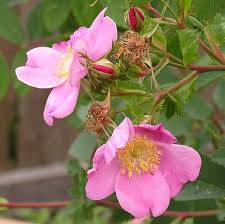Humidity: Important For Your Gliders
- NSSG

- Dec 19, 2019
- 4 min read
Updated: Mar 3, 2020
Natural humidity levels for sugar gliders range from 70-90%. This is a photo of a sugar glider's natural environment below, demonstrating the high humidity levels.

Here in Montana, average humidity is between 40-80%.
Daily air humidification leads to great benefits in human, pet, plant, and home health.
You can identify your state's local humidity levels, average-high-low, with the Current Results weather and science facts available for the United States. Check it out: https://www.currentresults.com/Weather/US/weather-averages-index.php
With winter well on the way, air temperatures are cool, and often dry in the northwest– even with snow or ice on the ground. The warmer the air, the more quickly water evaporates. Wind helps whisk vapor molecules away, further speeding the process. Heaters inside the home dry air further. In winter, if outdoor humidity is moderate or high, the temperatures are not safe for open windows in a glider room.
It is recommended to hydrate the environment during winter especially, and keep in mind raised humidity levels are beneficial to all life year-round.
We would like to bring attention to the value of providing daily humidity to your home, particularly with sugar gliders living within. Dryness in the lungs of small animals, particularly exotics, is uncomfortable and results in a higher susceptibility to infection. Overall behavior and health both vastly improve with the addition of daily humidity in the environment.

Temperature and humidity gauges are available for low prices online, in animal care stores, or at many home goods markets. Keep gauges near your gliders' enclosure, out of direct sunlight or direct flow of a humidifier for the most accurate results.
Vaporizers create humidity by boiling water into steam. This is more hygienic than a humidifier, but not recommended for pets, the water may burn if spilled.

Humidifiers contain a small heating element that transforms cold water into a fog. Exquisite humidifiers are available through health providers as well as online. Small, USB-charged portable units are readily available online and only require a small water source, such as an open glass or container. Filters may need to be replaced over time.
Using demineralized water lengthens the life of humidifier filters. Automatic power-off when water levels fall too low is recommended. Additives including essential oils (some use small amounts of eucalyptus for sugar gliders) can be used for effect, however, will compromise the filter and mechanisms of humidifiers over time. For the most benefit, use pure water.
Exotic pets may be moved towards open water sources such as sinks or showers to improve humidity levels. Shallow water dishes may be placed inside to increase natural humidity. Low-tech options such as a spray bottle also boost humidity levels. Waterfalls are not recommended for use inside enclosures. Sugar gliders easily become hypothermic if wet, and electric cords inside their enclosures are dangerous. Moistened fabrics may evaporate and raise humidity levels, and can be hung on or around the cage. This will lowe ambient room temperature as well.

The addition of live plants into the home can also raise natural humidity and oxygen levels. Plants are not recommended for use inside enclosures. Gliders will destroy the plants in a day or two. The soil in store-bought plants often contains toxic fertilizers. Plants are best kept around the room, and be sure to use only non-toxic plants or flowers. Most herbs and fruit trees are great options, and safe flowers include daisies, sunflowers, lavender, and marigolds. Check out GliderCentral.com for a great collection on safe plants for sugar gliders.

Many safe options for humidity are available and should be used before leaving deep water sources open, such as a toilet, filled bathtub or sink. Frequently, gliders are reported drowned in open toilets, bath tubs or containers with water. The gliders become hypothermic, exhausted, and will quickly drown. "Toilet ladders" can be constructed with bendable wire mesh and placed on the rim, so a glider may have something to climb onto should they fall or jump into a toilet.
De-mineralized water is recommended for use in humidifiers. This is distilled water, deionized water, or water filtered with a membrane: reverse osmosis, or nanofiltration. No negative effects are seen in mouse lung tissue following short exposure to tap water, high silica water, or pure water via humidifier fog– called "white mist"– however long exposure effects of using tap or waters with higher total dissolved solids may occur.

Vaporized minerals transfer into cellular membranes and organelles when inhaled into the lungs. Cells exhibit the effects of mineralization but do not lose function as seen in the following 14-day study. Long exposure to vaporized minerals, particularly from hard water sources, may be apparent and cause negative effects over extended periods of inhalation. Demineralized water, in addition, extends the life of humidifiers. https://www.ncbi.nlm.nih.gov/pmc/articles/PMC3922954
We hope to educate owners to the benefits of using humidity sources for their exotic animals' comfort and health. Humidity is beneficial to humans and the home as well. Raising humidity in the home leads to more restful sleep, ease of breathing, natural healing, healthier skin, and a balanced function of mucous membranes. Static electricity decreases, and natural wood furniture as well as house plants' cellular respiration benefits from added air hydration. Discussions of experience with using humidifiers are welcome.





Comments